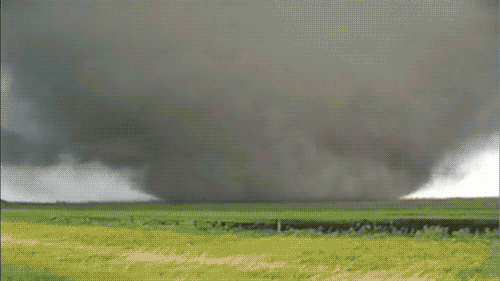**How Fast is a Tornado?**
When it comes to natural disasters, few things inspire as much fear and awe as a tornado. These powerful storms can wreak havoc on everything in their path, tearing through buildings and tossing vehicles like toys. But just how fast is a tornado? In this article, we will explore the incredible speeds at which tornadoes can travel, as well as some other fascinating facts about these terrifying weather phenomena.
Tornadoes are known for their incredible speed and destructive power. While it may be difficult to accurately measure the exact speed of a tornado, scientists have estimated that they can reach speeds anywhere from 50 to 300 miles per hour (80 to 480 kilometers per hour). This range makes tornadoes one of the fastest natural forces on Earth.
**The Fujita Scale: Measuring Tornado Intensity**
To understand just how fast a tornado can be, it’s important to look at the Fujita Scale, which measures tornado intensity based on the damage they cause. The scale ranges from F0 to F5, with F0 being the weakest and F5 being the most devastating. The speed of a tornado is often classified based on its associated Fujita Scale rating.
On the lower end of the scale, an F0 tornado typically has wind speeds between 40 and 72 miles per hour (64 to 116 kilometers per hour). These tornadoes can cause minor damage to buildings, such as broken tree branches and shingles ripped off roofs.
Moving up the scale, an F3 tornado can have wind speeds ranging from 136 to 165 miles per hour (219 to 266 kilometers per hour). These tornadoes can cause severe damage, including the destruction of well-built houses and the toppling of large trees and structures.
At the most extreme end of the spectrum, an F5 tornado can have wind speeds of over 200 miles per hour (322 kilometers per hour) or more. These tornadoes are incredibly rare and are capable of leveling entire neighborhoods and even small towns.
**The Mechanics of Tornado Formation**
So, what causes tornadoes to reach such incredible speeds? Tornadoes are typically born out of severe thunderstorms that contain a rotating column of air known as a mesocyclone. When certain atmospheric conditions align, the mesocyclone can spawn a tornado. The spinning motion of the tornado is a result of wind shear, which is the difference in wind direction and speed at different altitudes.
As the tornado forms and intensifies, it begins to pull air from its surrounding environment into its vortex. This inflow of air helps to drive the tornado’s rotation and increase its speed. The combination of strong updrafts and intense wind shear creates the perfect cocktail for a fast and powerful tornado.
**The Fastest Tornadoes on Record**
While most tornadoes fall within the speed range mentioned earlier, there have been some reports of tornadoes moving at incredibly high velocities. These especially fast tornadoes are known as “super tornadoes” and are a rare occurrence.
One of the fastest tornadoes on record occurred on May 3, 1999, in central Oklahoma. This tornado, rated an F5, had estimated wind speeds of up to 318 miles per hour (512 kilometers per hour). This makes it the fastest wind speed ever recorded on Earth, surpassing the previous record set by a tornado in Texas in 1971.
Another notable super tornado struck the city of Moore, Oklahoma, on May 20, 2013. This tornado, also rated an F5, reached estimated wind speeds of 210 miles per hour (338 kilometers per hour) as it tore through the town, causing widespread devastation.
**Frequently Asked Questions**
Now that we have explored the incredible speeds of tornadoes, let’s address some common questions that people have about these destructive storms:
**Q: Are tornadoes faster than hurricanes?**
A: While tornadoes can reach impressive speeds, hurricanes are generally slower-moving storms. The average forward speed of a tornado is around 30 miles per hour (48 kilometers per hour), while hurricanes tend to travel at speeds closer to 10 to 20 miles per hour (16 to 32 kilometers per hour).
**Q: How long does a tornado typically last?**
A: Tornadoes can vary greatly in duration. Some tornadoes may only last a few minutes, while others can persist for over an hour. The average lifespan of a tornado is around 10 minutes.
**Q: What is the largest tornado ever recorded?**
A: The largest tornado ever recorded occurred on May 31, 2013, in El Reno, Oklahoma. This tornado had a maximum width of 2.6 miles (4.2 kilometers) and was rated an EF5, the highest intensity on the Enhanced Fujita Scale.
**Final Thoughts**
Tornadoes are incredible forces of nature that can reach astounding speeds. While their exact velocities may be challenging to measure, the power and destruction they leave in their wake are undeniable. Understanding the speed at which tornadoes can travel helps us appreciate the importance of early warning systems and preparedness in minimizing their impact on communities. So, the next time you hear reports of a tornado forming nearby, take cover and stay safe.
